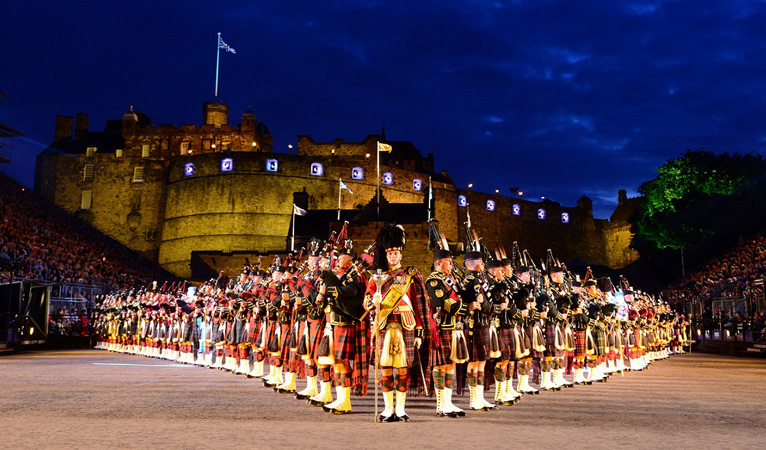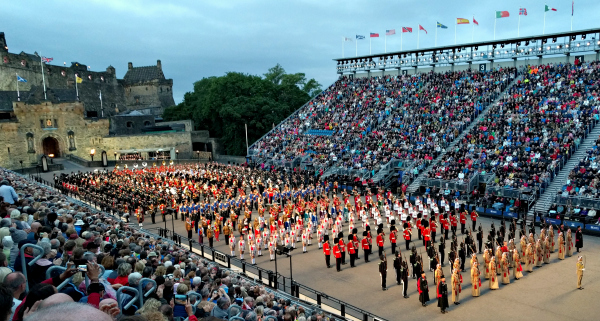by Catherine McKinley

Usually, August in Scotland means it’s time(!) for “the most spectacular show in the the world” The Royal Edinburgh Military Tattoo, annually attended by 220,000 spectators.The Tattoo will, like other events, be taking the Summer of 2020 off due to COVD19. Of course, it will return. In the meantime, there’s 70 years of history of this colorful Scottish Summer Spectacle to review and recall.
This now extravagant display started as a humble play, set in a military base, called “Something About A Soldier” in 1949. It was always performed at the Ross Bandstand located in Princes Street Gardens just below the castle (as seen in the photo below).

The word “tattoo,” most often refers to images needled into the skin. In this case, the term “tattoo” derives from the 17th century Dutch phrase “doe pen tap toe” which means “turn off the tap.” A regimental corps of drums would play at night signaling tavern owners to turn off the taps of their ale kegs. This was to urge soldiers to return to their lodgings and get enough rest to be able to rise with the next morning’s reveille. Some extra significant years:
1950 – The Show Begins, featuring 8 military bands.
1953 – Highland Dancing Added.
1960 – The Duke Of Edinburgh himself (Prince Phillip) was in the stadium to take the salute.
1967 – Military Horses (that year’s main theme) join the cast.
1968 – Vocalists added. New color TV satellite splashes Tattoo splendor around the world.
1980 – Featured piper was lowered onto the field by RAF helicopter.
1996 – The Tattoo was dedicated to Robert Burns on the bicentenary of his passing.
1997 – Queen Elizabeth’s Golden Jubilee. She & the Duke of Edinburgh attend the Tattoo.
2000 – The Tattoo’s Golden Jubilee.
2011 – Due to The Tattoo’s popularity, a new, larger show Stadium is erected.
2019 – Tattoo dedicated to N.A.T.O.’s 70th Anniversary.

Over the decades, motorcycle drill teams, gymnastic exhibitions, fire brigade exercises, police dog demonstrations, etc. have taken part in the Tattoo. Special Tartan patterns have been assigned.

